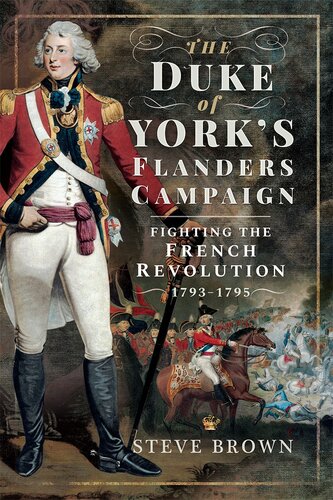

Most ebook files are in PDF format, so you can easily read them using various software such as Foxit Reader or directly on the Google Chrome browser.
Some ebook files are released by publishers in other formats such as .awz, .mobi, .epub, .fb2, etc. You may need to install specific software to read these formats on mobile/PC, such as Calibre.
Please read the tutorial at this link: https://ebookbell.com/faq
We offer FREE conversion to the popular formats you request; however, this may take some time. Therefore, right after payment, please email us, and we will try to provide the service as quickly as possible.
For some exceptional file formats or broken links (if any), please refrain from opening any disputes. Instead, email us first, and we will try to assist within a maximum of 6 hours.
EbookBell Team

4.7
16 reviewsTo crush the French Revolution, the armies of the First Coalition gathered round France’s borders, the largest of which was assembled in Flanders. Composed of Anglo-Hanoverian, Dutch, Hessian, Prussian and Imperial Austrian troops, its aim was to invade France and restore the nobility to what was considered their rightful place. Opposing them was the French Armée du Nord. In command of the Anglo-Hanoverian contingent was the son of George III, the Duke of York. The campaign was a disaster for the Coalition forces, particularly during the severe winter of 1794/5 when the troops were forced into a terrible and humiliating retreat. Britain’s reputation and that of its military leaders was severely diminished, with the forces of the Revolution sweeping all before them on a tide of popularism. Yet, from this defeat grew an army that under the Duke of Wellington would eventually crush the Revolution’s greatest general, Napoleon Bonaparte. Of the Flanders Campaign, Wellington, who fought as a junior officer under the Duke of York, remarked that the experience had at least taught him what not to do. Napoleon Series research editor Steve Brown has produced one of the most insightful, and much-needed studies of this disastrous but intriguing campaign, with particular focus on the British Army’s contribution. With copious maps and nineteen appendices including detailed orders of battle, he concludes this important work with an analysis that draws striking, and significant comparisons with the Flanders campaigns of 1914 and 1940. How history repeats itself . . .